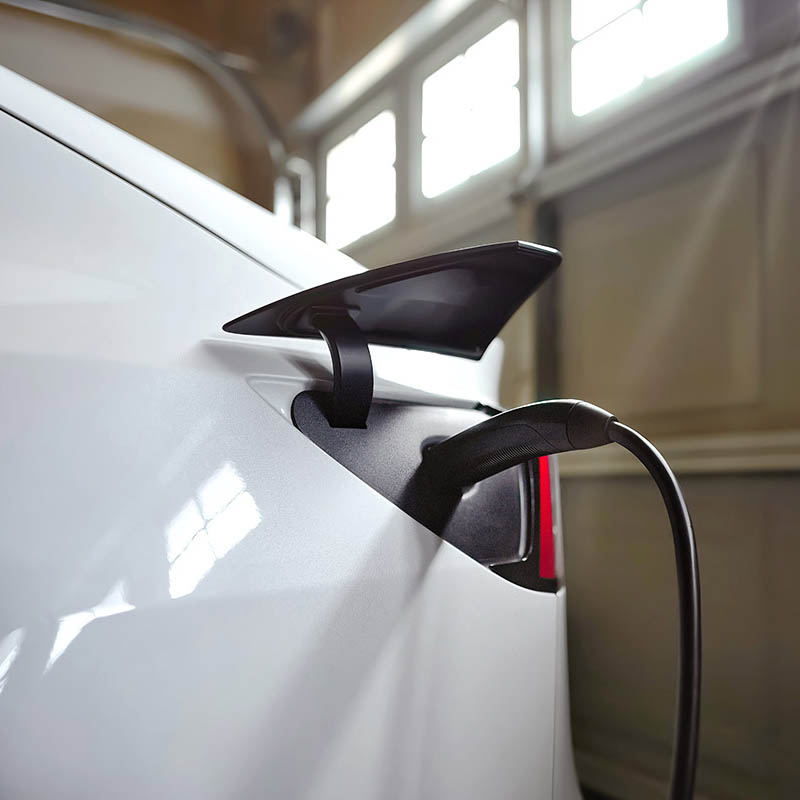Alberta Needs Residential Time-Of-Use Electricity Rates!
By Shawn Allen, P.Eng, CFA, CPA, MBA
![]()
There is currently a disparity in electricity pricing in Alberta, where large commercial and industrial customers benefit from lower costs and incentives for off-peak usage, while residential and small commercial customers still pay standard rates. This situation persists despite technological advancements and changing usage patterns, such as the increasing prevalence of electric vehicles and increased use of air conditioning in summer. Past concerns about the inconvenience of shifting load times and the costs of metering and billing changes are now outweighed by the opportunities presented by digitization and smart technology. The implementation of Time-Of-Use rates to encourage efficient energy use would help manage the growing demand, particularly from electric vehicles, which could strain the distribution system without these incentives.
Alberta has had a wholesale hourly electricity pool price since 1996. Larger commercial and industrial customers have purchased power based on their specific hourly load patterns since 2001. Those customers with higher-than-average off-peak load usage are rewarded with a lower average cost per kWh. And all these large customers have financial incentives to shift their consumption away from peak hours.
Yet residential and small commercial customers still don’t have access to electricity rates based on their individual specific usage patterns some 28 years after the introduction of the hourly wholesale market! Customers with higher-than-average off-peak usage are not rewarded with a lower average cost per kWh. These small customers currently have no financial incentives to shift their consumption away from peak hours.
The case for residential and small commercial Time-Of-Use rates in Alberta has been studied and rejected in the past. It was argued that with very little electric heating load, there was not enough load that people could easily defer. Delaying cooking would be too much of an inconvenience. Moreover, delaying the use of dishwashers and clothes washers would be inconvenient and perhaps too small a load to make much difference. There would also be the costs of installing interval metering and costs for software and billing changes.
“As EVs become more common, especially in single-family home settings, this could eventually require expensive upgrades to the distribution system. Fortunately, EV charging is ideally suited for time-shifting with automatically scheduled overnight charging.”
Why We Now Need Time-Of-Use Rates:
- Electric Vehicles will become increasingly common. A home EV charger is typically 240 volts and 40 amps. That’s 9,600 volt-amps or 9.6 kVA, which is also 9.6 kW. In most cases, the vast majority of EV charging will be done at home. As detailed in the table below, this will be a home’s single largest load. Home chargers will typically run daily for one or two hours but can also run for four to six hours for those with long commutes or who have let the battery run down. It’s expected that a common practice would be to plug in after arriving home from work – just in time for the evening peak system load and any associated price spikes.
- Over the past several years, as summers have gotten hotter, the prevalence of residential air conditioning has increased. These are large loads that run for many hours per day, especially on the hottest summer days. Some of those days are associated with peak loads and significant price spikes.
- Digitization and the ease with which we can program appliances and loads using smartphone apps have greatly increased the opportunities for Time-Of-Use data to control loads. Technology is now available to automatically curtail large loads such as EV chargers, air conditioners and electric water heaters at the time of power price spikes or simply based on the time of day.
The following table ranks the size of various residential loads and comments on their suitability for shifting consumption away from peak hours.
| Item | Load | Suitability for Time Shifting |
| Electric Vehicle Charger | 9.6 kW | Highly Suitable |
| Oven plus Two Elements | 6.6 kW | Inconvenient |
| Central Air Conditioning | 3.5 kW | Highly Suitable |
| Electric Clothes Dryer | 3.4 kW | Suitable |
| Electric Water Heater | 3.0 kW | Highly Suitable |
| Standard Dishwasher | 2.1 kW | Suitable |
| Standard Clothes Washer | 2.0 kW | Suitable |
| Hot Tub | 1.5 kW | Highly Suitable |
| Block Heater | 0.8 kW | Highly Suitable |
| Furnace Fan | 0.5 kW | Suitable |
| Standard Refrigerator | 0.4 kW | Suitable but Small |
| Indoor Lighting | Variable | Not Suitable |
| Television 50” LED | 0.1 kW | Inconvenient and Small |
Source: https://www.fortisalberta.com/electricity-calculator
Loads Most Suitable for Demand Shifting and Control
As EVs become more common, especially in single-family home settings, this could eventually require expensive upgrades to the distribution system. Fortunately, EV charging is ideally suited for time-shifting with automatically scheduled overnight charging. With proper time-shifting incentives, the vast majority of such charging can take place overnight when the distribution system has ample capacity. EV chargers can easily be programmed to charge only after, say 9:00 pm. Likewise, these settings can be overwritten/adjusted as needed.
Central air conditioning is another large load that could be interrupted for an hour or two during peak hours with little to no inconvenience or discomfort. This load is most suitable for automated interruption during the most extreme peak loads and/or price spikes. The same can be said for electric water heaters.
An oven, along with one or more range elements, is a large load but is quite inconvenient to time switch. Customers would likely only be willing to do this in emergency situations or if the financial reward was meaningful. There are numerous other household loads that would be somewhat (clothes dryer) to very (television) inconvenient to time-shift but which customers would likely be willing to curtail in emergency situations or occasionally if a meaningful financial reward was offered.
Recommendation:
It’s past time to require distribution utilities to provide metered hourly data to retailers for all customers. Retailers should be free to offer flat, Time-Of-Use, or even hourly rates. It may also be possible for retailers to offer real-time incentives for customers to curtail below their normal usage levels at times of extreme wholesale price spikes. The various distribution utilities and retailers may be at different stages of readiness and ability to provide hourly data.
There will always be excuses and objections, but now is the time to start the process of offering Time-Of-Use rates to all customers. The increasingly rapid adoption of EVs is making this imperative.
Shawn Allen’s career included 29 years in the field of electricity rates and regulation. Over that time, he was employed by Nova Scotia Power, EPCOR, and the Alberta Utilities Commission. He is currently semi-retired and provides online investment articles and analysis at www.investorsfriend.com



